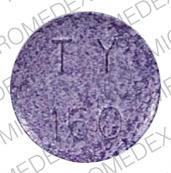Jr. Tylenol Interactions
There are 160 drugs known to interact with Jr. Tylenol (acetaminophen), along with 3 disease interactions, and 2 alcohol/food interactions. Of the total drug interactions, 8 are major, 116 are moderate, and 36 are minor.
- View all 160 medications that may interact with Jr. Tylenol
- View Jr. Tylenol alcohol/food interactions (2)
- View Jr. Tylenol disease interactions (3)
Most frequently checked interactions
View interaction reports for Jr. Tylenol (acetaminophen) and the medicines listed below.
- albuterol
- amoxicillin
- aspirin
- Aspirin Lite Coat (aspirin)
- Aspirin Low Strength (aspirin)
- Bactrim Pediatric (sulfamethoxazole / trimethoprim)
- Childrens Ibuprofen Berry (ibuprofen)
- Ciprodex (ciprofloxacin / dexamethasone otic)
- Diprolene (betamethasone topical)
- DuoNeb (albuterol / ipratropium)
- Effexor XR (venlafaxine)
- Fleet Enema (sodium biphosphate / sodium phosphate)
- Flintstones Multivitamins (multivitamin)
- Haldol (haloperidol)
- hydrocortisone topical
- Lamictal (lamotrigine)
- Lidex (fluocinonide topical)
- MetroLotion (metronidazole topical)
- MiraLAX (polyethylene glycol 3350)
- Motrin (ibuprofen)
- Motrin Junior Strength (ibuprofen)
- multivitamin
- MVI Pediatric (multivitamin)
- Nix Complete Lice Treatment System (permethrin topical)
- omeprazole
- oxygen
- Patanol (olopatadine ophthalmic)
- Phenchlor Tannate Pediatric (chlorpheniramine / phenylephrine)
- prednisolone
- Prevacid (lansoprazole)
Jr. Tylenol alcohol/food interactions
There are 2 alcohol/food interactions with Jr. Tylenol (acetaminophen).
Jr. Tylenol disease interactions
There are 3 disease interactions with Jr. Tylenol (acetaminophen) which include:
More about Jr. Tylenol (acetaminophen)
- Jr. Tylenol consumer information
- Compare alternatives
- Drug images
- Latest FDA alerts (17)
- Side effects
- Dosage information
- During pregnancy
- Drug class: miscellaneous analgesics
- Breastfeeding
Related treatment guides
Drug Interaction Classification
| Highly clinically significant. Avoid combinations; the risk of the interaction outweighs the benefit. | |
| Moderately clinically significant. Usually avoid combinations; use it only under special circumstances. | |
| Minimally clinically significant. Minimize risk; assess risk and consider an alternative drug, take steps to circumvent the interaction risk and/or institute a monitoring plan. | |
| No interaction information available. |
See also:
Further information
Always consult your healthcare provider to ensure the information displayed on this page applies to your personal circumstances.


